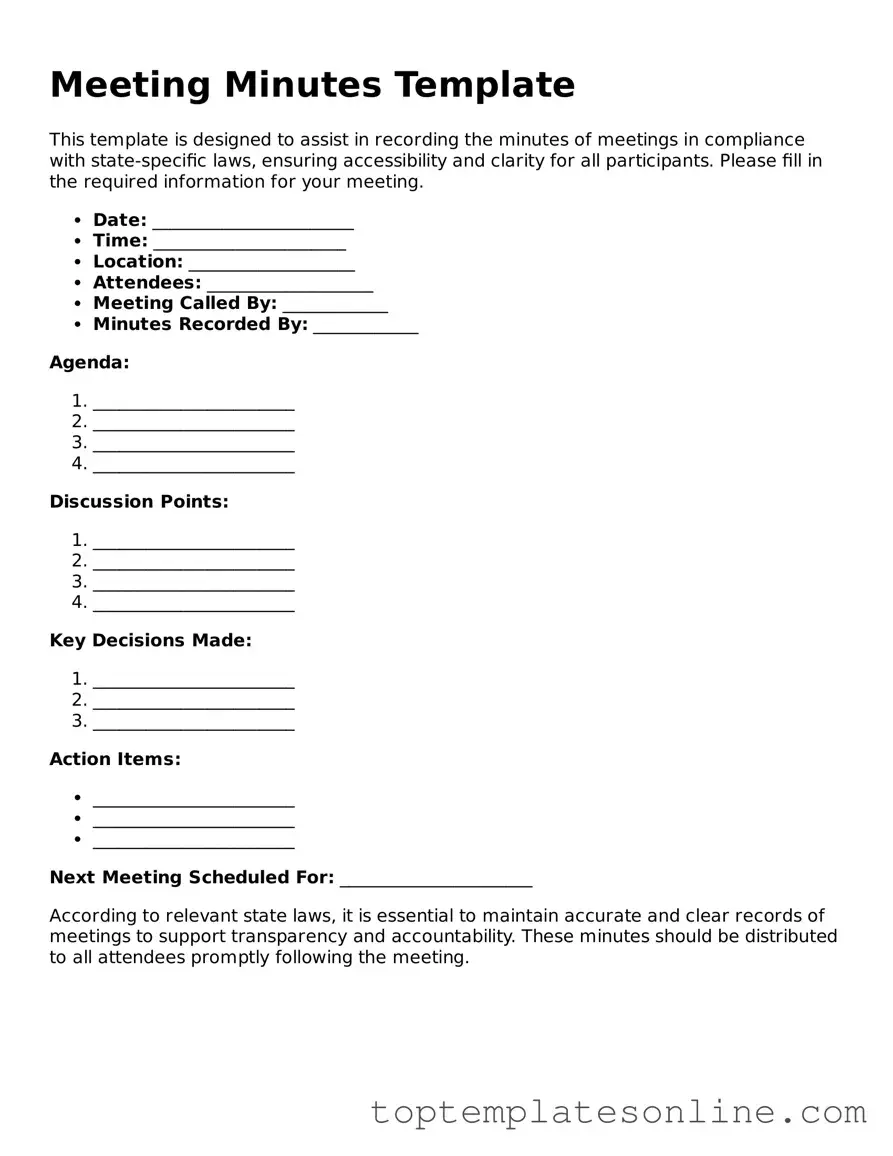Attorney-Approved Meeting Minutes Form
The Meeting Minutes form is a document used to record the discussions, decisions, and actions taken during a meeting. This form serves as an official account of what transpired, providing clarity and reference for attendees and those unable to attend. Properly maintained meeting minutes can enhance accountability and ensure that all participants are on the same page regarding the outcomes of the meeting.
Customize Meeting Minutes Here
